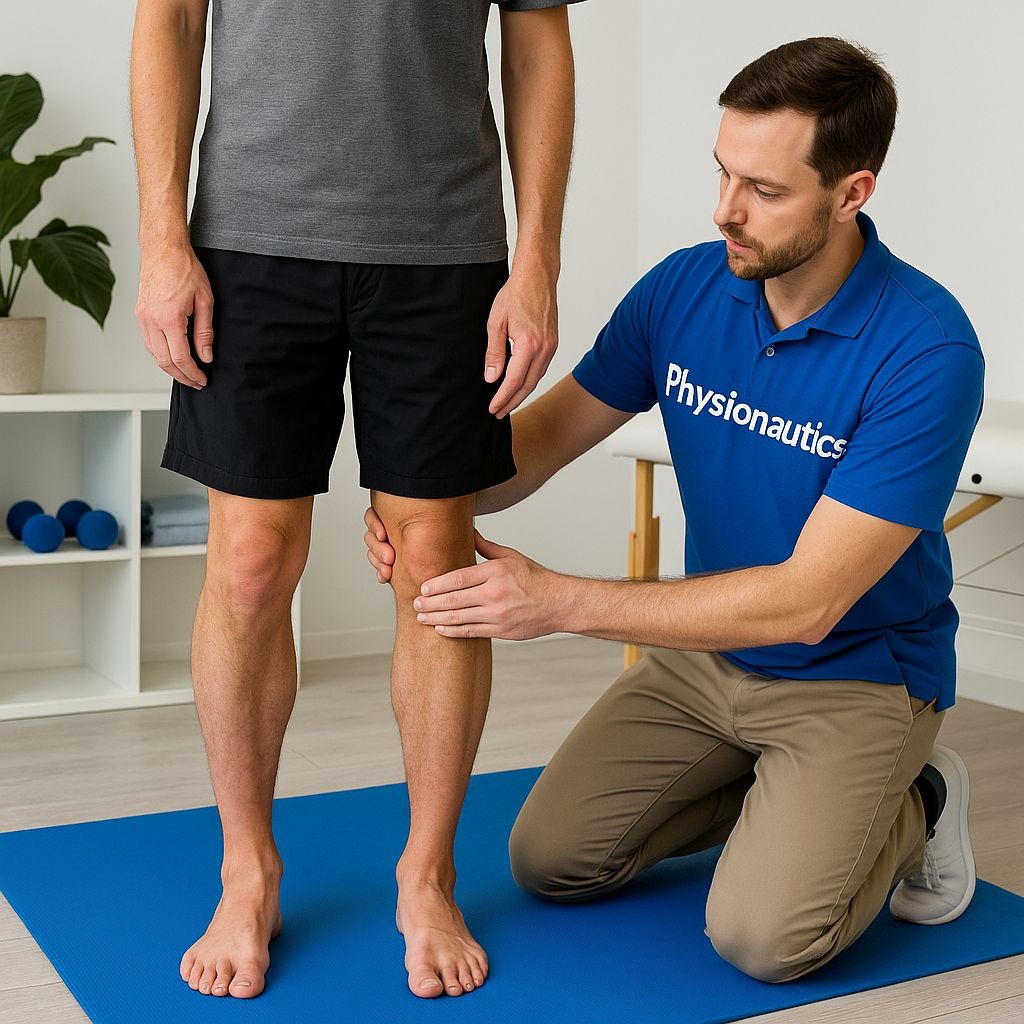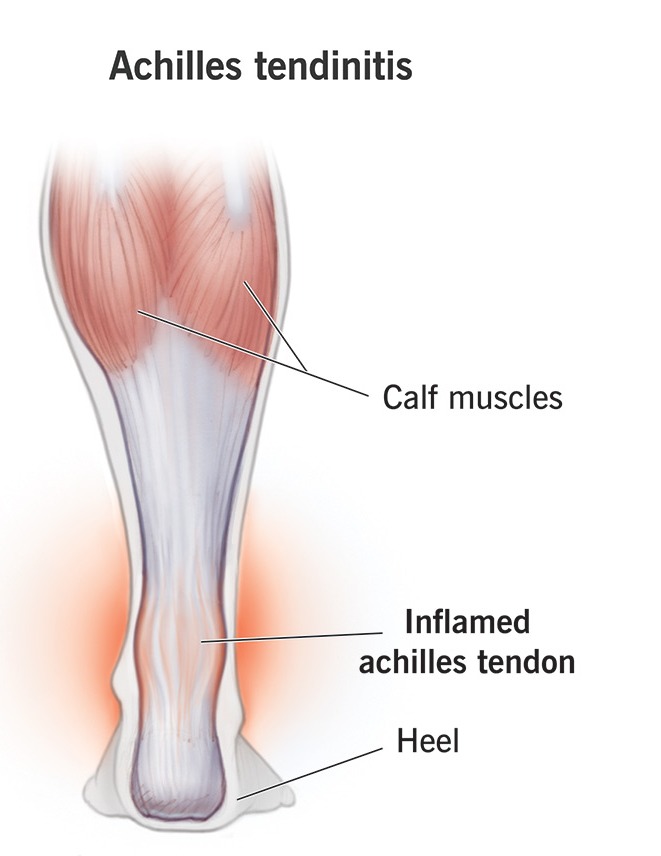



Best Physiotherapy Treatment for Achilles Tendonitis-Physionautics An injury to the Achilles tendon is called Achilles tendonitis. It can be brought on by overuse, which is when you use it too often or too hard without getting adequate rest. Or it may arise for no apparent reason. The band of tissue that connects the heel bone to the calf muscles at the rear of the lower leg is called the Achilles tendon. Achilles tendinopathy is another name for Achilles tendinitis. It frequently happens to runners who have abruptly increased their running distance or intensity. It's also typical for middle-aged folks to solely participate in weekend activities like basketball or tennis.The most common treatment for Achilles tendonitis is at-home care under a doctor's supervision. Taking care of oneself can help keep Achilles tendonitis from coming back. Tendon tears, sometimes known as ruptures, can result from severe cases of Achilles tendinitis. Surgery may be necessary to repair tears.After jogging or engaging in other sports, Achilles tendinitis pain typically starts as a slight aching in the back of the leg or above the heel. Long-term running, stair climbing, or sprinting may result in more intense burning or hurting pain. Pain may develop over time, even when you're at rest. The affected foot may be difficult to use if you have Achilles tendonitis. Additionally, the area may feel stiff or sensitive, particularly in the morning. Mild activity generally relieves the discomfort.Although the exact reason is occasionally unknown, Achilles tendinitis can be brought on by repeated or severe straining of the Achilles tendon. The band of tissue connecting the calf muscles to the heel bone is called the Achilles tendon. Walking, sprinting, jumping, climbing, and standing on tiptoe all need the utilization of this tendon. Achilles tendinitis can develop where the tendon joins to the heel bone or in the center of the tendon. As we age, the Achilles tendon becomes weaker. That may make getting hurt easier. This is true for those who only participate in sports on the weekends or who begin running longer, faster, or farther without gradually increasing their distance.Age is one factor that can increase the risk of Achilles tendonitis. As people age, Achilles tendinitis becomes increasingly prevalent. physical issues. The Achilles tendon may be more strained whether the foot has a high arch or a flat arch. Tendon tension can also be increased by obesity and tense calf muscles. Another factor that may raise the risk is having legs of varying length. experiencing Achilles tendonitis. The likelihood of acquiring it again rises as a result. training decisions. Achilles tendonitis is more likely to occur when running in shoes that are worn out. Running with bad form might also do it. In colder climates, tendon pain is more common than in warmer ones. Achilles injuries can also occur when running up hills.Achilles inflammation may cause the tendon to deteriorate. It is more prone to rip, also known as rupture, because to the weakness. Surgery is frequently required to treat an Achilles rupture, which is a significant injury.There may be no way to avoid Achilles tendonitis. However, the following strategies can help lower the risk: Gradually increase your degree of activity. Take it gently when beginning a new exercise. Gradually increase the duration and intensity of your training. Relax. If you're not used to doing things that strain your tendons, like hill running, don't do them. Before beginning a strenuous activity, warm up by working out more slowly. Stop and take a break if you experience any pain while exercising. Make a wise shoe choice. Your heel should be cushioned by the shoes you wear when exercising. We provide service in areas like new friends colony, zakir nagar, jasola, maharanibagh, sukhdev vihar, east of kilash, chattarpur, greater kailash, munirka, vasantvihar, vasantkunj, panchseelpark, greenpark and golflinks.
We hate spam too.